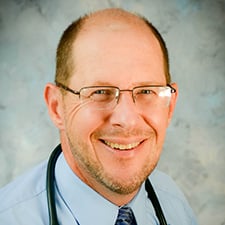A primary care model that makes greater use of medical assistants—among other changes—has helped cut patient wait times, raise job satisfaction and give physicians more time for direct patient care, according to a study whose results shed further light on the effectiveness of team-based care.
The Together Each person Achieves More (TEAM) Primary Care model was linked to 77 percent lower patient wait times (from nine minutes to two) and 8 percent more physician and staff time with patients (from 24 minutes to 26).
The TEAM approach was implemented in two clinics in the Watertown Regional Medical Center, a small integrated delivery system in Wisconsin, that has a 90-bed hospital, 10 primary care clinics and 24 employed physicians in nine specialties.
Despite the practice upheaval involved in implementing the new practice model, job satisfaction among clinic employees rose 5 percent. And some physicians reported a 50 percent drop in their after-hours clerical work often dubbed. These results were published in The Journal of Family Practice.
“Innovations like the TEAM Primary Care model may help us improve the well-being of not just our patients, but also our health professionals and the health care industry as a whole,” said James Milford, MD, a primary care physician at Three Oaks Health in Johnson Creek, Wisconsin.
Dr. Milford is also the lead author of the study, which was co-written by Michael R. Strasser and Christine Sinsky, MD, a general internist and AMA vice president of Professional Satisfaction.
Committed to making physician burnout a thing of the past, the AMA has studied, and is addressing, issues causing and fueling physician burnout—including time constraints, technology and regulations—to better understand the challenges physicians face.
Here are three keys that help this team-based primary care model work so effectively.
Expand MA responsibilities
In the traditional model in these two clinics, the MA would retrieve the patient from the waiting room, conduct an initial assessment in the exam room and then leave the room. Once the physician entered the room and conducted the exam, the patient would be left to wait again. The MA would then complete follow-up orders and provide the patient with a visit summary.
The clinics adopted a staffing ratio of three medical assistants for two physicians—up from a two-to-one ratio—which allowed MAs to take on expanded roles during exam-room entry and discharge. That includes helping with documentation during the patient visit.
That staffing ratio was arrived at after some trial and error, Dr. Milford said. A one-to-one ratio meant the MA was too busy scribing to help prep the next patient for the physician visit. With a two-to-one ratio, the MAs “were sitting around too much.” The three-to-two ratio “seemed to be the sweet spot.”
Adopt a co-visit format
To ensure consistency throughout the day, Dr. Milford and his team designed a co-visit workflow that included the entire team. Visual and electronic cues trigger each step of the TEAM process and coordinate the movements between MAs and physicians, including:
- A conventional flag system outside each exam room.
- An electronic messaging system within the EHR to indicate when a patient was ready to be seen.
- A whiteboard in an area visible to all team members that included lab and radiology requests.
“What we found was it really wasn’t about the scribing,” said Dr. Milford. “It was about having time to build a relationship, being in there when I am talking to the patient—me being in there when they are talking to the patient and the patient seeing us working as a team and trusting us.”
Enhance communication
Physicians and MAs are seated at side-by-side workstations to improve communication. This also allows for face-to-face handoffs.
“Everything we have learned to do in medicine—where you are looking face-to-face when you tell a story about a person—is very important,” said Dr. Milford.
The clinic’s changes are “an empowering thing,” he added. “We all feel genuinely valued and empowered to take on multiple roles and tasks. There’s a joy in practice when I come in now.”
AMA’s STEPS Forward™ is an open-access platform featuring more than 50 modules that offer actionable, expert-driven strategies and insights supported by practical resources and tools. Based on best practices from the field, STEPS Forward modules empower practices to identify areas or opportunities for improvement, set meaningful and achievable goals, and implement transformative changes designed to increase operational efficiencies, elevate clinical team engagement, and improve patient care.
Several modules have been developed from the generous grant funding of the federal Transforming Clinical Practices Initiative (TCPI), an effort designed to help clinicians achieve large-scale health transformation through TCPI’s Practice Transformation Networks.
The AMA, in collaboration with TCPI, is providing technical assistance and peer-level support by way of STEPS Forward resources to enrolled practices. The AMA is also engaging the national physician community in health care transformation through network projects, change packages, success stories and training modules.




